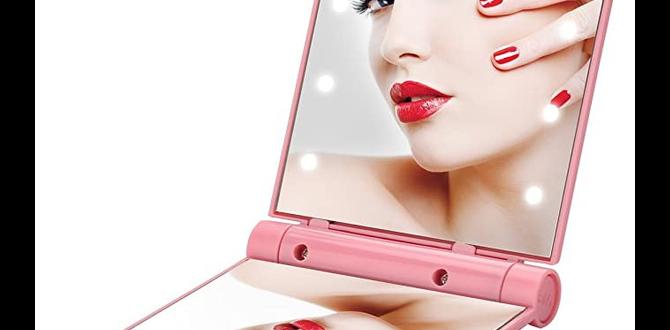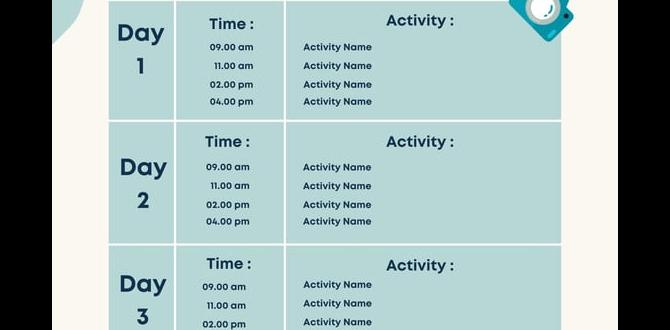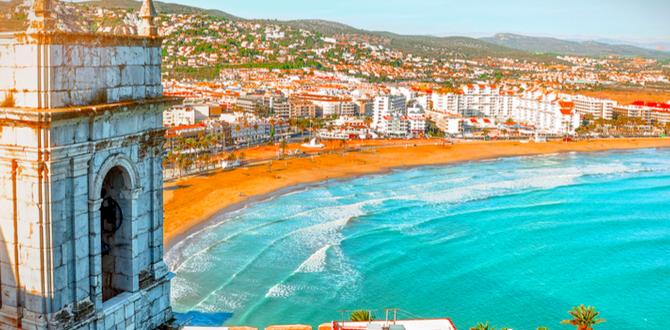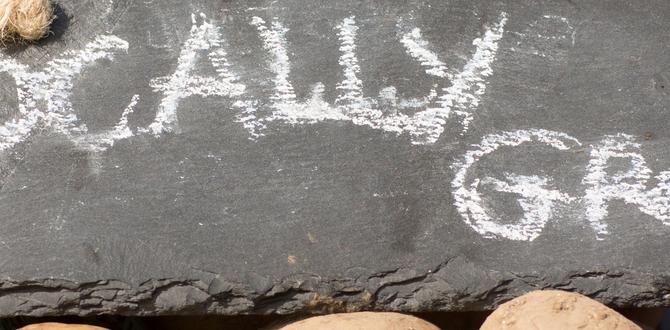Discover Beirut’s most walkable routes and essential maps with this beginner’s guide. Explore the city’s vibrant streets, charming neighborhoods, and historical landmarks on foot, making your journey easy and enjoyable.
Embarking on a new city can feel daunting, especially when you just want to wander and soak in the atmosphere. Figuring out where to walk, or how to get around without relying solely on transportation, is a common travel puzzle.
Many travelers find themselves asking, “Can I really walk around Beirut and see the sights?” The answer is a resounding yes! This guide is here to demystify exploring Beirut on foot, making it less of a hassle and more of an adventure. We’ll share the best paths, crucial mapping tips, and practical advice to ensure your walking tours are as smooth as possible. Get ready to experience Beirut from a whole new perspective!
Why Walking is the Best Way to Experience Beirut
Beirut is a city that begs to be discovered at a leisurely pace. While the city has a public transport system and taxis are readily available, there’s a unique magic in traversing its streets on foot. You notice the details: the intricate balconies of old buildings, the aroma of freshly baked manakish from a hidden bakery, the lively chatter spilling from cafes, and the vibrant street art that tells stories on every corner.
Walking allows you to stumble upon unexpected gems – a quiet courtyard, a quirky boutique, or a breathtaking view you might otherwise miss. It’s also an excellent way to understand the city’s diverse neighborhoods, each with its own character and history. From the more modern Mar Mikhael to the historic Downtown, each step reveals another layer of Beirut’s complex and fascinating identity. Plus, it’s budget-friendly and great for your health!
Understanding Beirut’s Layout: A Beginner’s Overview
Beirut’s urban fabric is a fascinating mix of old and new, with distinct districts that have their own feel. For walkers, understanding these general areas is key to planning your routes.
Downtown Beirut (Centre Ville): This is the historic heart, rebuilt after the civil war. It’s characterized by grand architecture, wide squares like Nejmeh Square, and key landmarks. While reconstruction continues, it’s a relatively orderly area to navigate.
Beirut Waterfront: Stretching along the Mediterranean, this area offers scenic promenades, parks, and modern developments. It’s a pleasant place for a stroll, especially in the cooler parts of the day.
Gemmayzeh & Mar Mikhael: These adjacent neighborhoods are known for their vibrant nightlife, trendy bars, restaurants, and art galleries. They are characterized by charming, older buildings and lively, narrow streets.
Hamra: Once the intellectual and cultural hub, Hamra still retains a lively atmosphere with universities, shops, and cafes. It has a more bustling, everyday feel compared to the polished downtown.
Achrafieh: This district is a mix of residential areas, shopping malls, and older neighborhoods. It can be hilly in parts, offering different perspectives of the city.
Navigating these areas on foot helps you appreciate the contrasts within Beirut. Remember that Beirut is a coastal city, so much of your exploration might revolve around its relationship with the sea.
Essential Tools for Your Beirut Walking Adventure
Before you set out, equipping yourself with the right tools will make your walking experiences much smoother and more enjoyable.
1. Reliable Maps
Google Maps: Your go-to digital companion. Download offline maps of Beirut before you go so you can navigate without using data. It provides walking directions, points of interest, and public transport information.
Citymapper App: While it has excellent public transport integration, Citymapper also offers reliable walking routes and can be a great alternative to Google Maps, often providing more granular detail in urban environments.
Physical Maps: A good old-fashioned paper map can be a lifesaver if your phone battery dies or you prefer a visual overview without relying on a screen. Pick one up at major hotels or tourist information centers if available.
2. Comfortable Footwear
This cannot be stressed enough! Beirut’s streets can be uneven, and you’ll likely be doing a lot of walking.
Supportive Sneakers or Walking Shoes: Prioritize comfort and support.
Avoid New Shoes: Always break in new shoes before a trip.
3. Hydration and Snacks
Reusable Water Bottle: Essential for staying hydrated, especially during warmer months. You can refill it at cafes or hotels.
High-Energy Snacks: Protein bars, nuts, or dried fruit are great for a quick energy boost between meals.
4. Sun Protection
Sunscreen: Apply liberally, especially if you’re visiting during sunny seasons.
Hat and Sunglasses: Provide extra protection.
5. Portable Power Bank
A dead phone can be a real problem. A fully charged power bank ensures your navigation tools and communication devices stay alive.
6. Comfortable Clothing
Lightweight, Breathable Fabrics: Ideal for Beirut’s climate.
Modest Dress Considerations: While Beirut is generally liberal, it’s respectful to dress modestly when visiting religious sites or when exploring more traditional neighborhoods. This typically means covering shoulders and knees.
Top Walkable Routes in Beirut
Beirut offers several fantastic routes perfect for exploration on foot. These routes are designed to give you a taste of the city’s history, culture, and modern life.
1. The Corniche Promenade
This is arguably Beirut’s most famous and accessible walking route. The Corniche is a long, seaside walkway that stretches for miles along the Mediterranean coast.
Starting Point: Often starts near Raouché Rocks and extends eastwards.
Key Features: Stunning sea views, the iconic Pigeon Rocks (Raouché), numerous cafes, benches for resting, and plenty of locals and tourists enjoying the fresh air.
Best Time to Go: Early morning for sunrise or late afternoon for sunset. Evenings are also popular for a lively atmosphere.
What to Expect: A relatively flat and well-maintained path. You’ll see joggers, families, couples, and people simply taking a moment to enjoy the view. The area around Raouché Rocks is particularly scenic.
2. Downtown Beirut (Centre Ville) Exploration
Rebuilt and revitalized, Downtown Beirut is a showcase of modern architecture blending with historical remnants.
Starting Point: Nejmeh Square (Place de l’Étoile).
Key Features: The restored Parliament Building, the Mohammad Al-Amin Mosque, Roman Baths, Sainte-Nagee Church, the vibrant shops and cafes around Maarad Street, and the Martyrs’ Square.
Best Time to Go: Daytime for shopping and sightseeing, or early evening for a more relaxed atmosphere.
What to Expect: Wide, clean streets, well-maintained historical sites, and a sense of order. It’s easy to spend hours here exploring the squares and connecting streets. This area is generally safe and well-lit.
3. Gemmayzeh and Mar Mikhael Street Art & Local Life Tour
These two interconnected streets are the bohemian heart of Beirut, brimming with personality.
Starting Point: Gemmayzeh Street.
Key Features: A plethora of independent art galleries, quirky bookshops, trendy bars, excellent restaurants serving traditional and international cuisine, and abundant street art. Mar Mikhael Street becomes particularly lively at night.
Best Time to Go: Late afternoon into the evening, to experience the transition from daytime buzz to nighttime energy. Weekends are very popular.
What to Expect: Narrower streets, often bustling with people. You’ll find a mix of restored traditional Lebanese houses and modern establishments. Keep an eye out for striking murals and graffiti. This area is best explored on foot to truly appreciate its charm.
4. Hamra Street & University District Wander
Hamra is a historic commercial and intellectual hub, still retaining much of its eclectic energy.
Starting Point: The main Hamra Street.
Key Features: A long street lined with shops, cafes, cinemas, bookstores, and a university presence. It feels more like an everyday Beirut, with a diverse mix of people.
Best Time to Go: Daytime and early evening offer the most activity.
What to Expect: A lively, sometimes crowded, street perfect for window shopping and people-watching. The surrounding side streets offer more cafes and smaller shops.
5. Zoukak El Blat Historic Walk
This lesser-known, revitalized area offers a glimpse into Beirut’s artistic and historical past.
Starting Point: Look for signs and explore the alleys off Spears Street or near the National Museum.
Key Features: Beautifully restored traditional Lebanese houses, art studios, cafes, and a tranquil, artistic atmosphere. It’s a quiet escape from the city’s busier areas.
Best Time to Go: Daytime is ideal for appreciating the architecture and visiting any open studios.
What to Expect: A charming, intimate neighborhood that feels like stepping back in time. The revitalization efforts here have preserved its unique character.
Navigating Safety and Etiquette While Walking
Beirut is a city that thrives on its welcoming spirit, but like any urban environment, it’s wise to be aware and prepared.
Safety Tips for Walkers:
Be Aware of Your Surroundings: As you would in any city, stay alert, especially in crowded areas. Keep your belongings secure.
Stick to Well-Lit Areas at Night: While areas like Bourj Hammoud and Mar Mikhael are lively and generally safe at night, it’s always best to stick to main streets if you’re unsure.
Traffic Awareness: Beirut traffic can be animated. Always look both ways multiple times before crossing streets, and be mindful that pedestrian crossings aren’t always strictly observed.
Trust Your Instincts: If a street or area feels uncomfortable, it’s okay to turn back or adjust your route.
Daytime is Generally Safest: For first-time visitors, exploring during daylight hours is recommended for maximum comfort and visibility.
Cultural Etiquette:
Modest Dress: As mentioned, dress respectfully, especially when you are not in the most tourist-heavy zones. This shows respect for local customs.
Asking for Permission: If you want to take photos of people, it’s polite to ask for their permission first.
Greetings: A simple “Salaam Alikum” (Peace be upon you) is a friendly greeting.
Hospitality: Lebanese people are known for their warmth and hospitality. Don’t be surprised if you’re invited for coffee or a chat!
Using Maps Effectively: From Digital to Physical
Maximizing your map usage is crucial for confident walking.
Digital Mapping Strategies:
Download Offline Maps: This is a non-negotiable step. Open Google Maps, search for “Beirut,” and tap the download button. You can then use the map functions without an internet connection.
Pin Key Locations: Before you leave your accommodation, pin your hotel, intended destinations, and any landmarks you want to see. This makes it easy to find your way back or plan your next steps.
Utilize GPS: Ensure your phone’s GPS is enabled. It works offline and will show your current location on the downloaded map.
Explore “Street View”: Before walking a particular route, use Google Maps’ Street View to get a visual idea of what streets look like. This can help you identify landmarks and avoid confusion.
Physical Map Reading Basics:
Orient Yourself: Use landmarks, the sun’s position, or street signs to orient your map correctly. The top of the map should ideally point north.
Understand the Legend: Familiarize yourself with the symbols used on the map for points of interest, parks, and roads.
Follow Main Roads: For initial explorations, sticking to main thoroughfares is often easier than navigating complex networks of smaller streets.
A Sample Walking Itinerary: The Beirut Highlights Tour (1 Day)
This sample itinerary focuses on key sites and is designed for a relatively active walker. Adjust based on your pace and interests!
Morning (9:00 AM – 12:00 PM): Downtown Beirut
Start at Nejmeh Square. Explore the Parliament Building and the surrounding plazas.
Visit the Roman Baths and the historic heart of Beirut.
Walk towards the stunning Mohammad Al-Amin Mosque.
Continue to Martyrs’ Square for a sense of history.
Lunch (12:00 PM – 1:00 PM): Find a cafe or restaurant in Downtown.
Afternoon (1:00 PM – 3:00 PM): Gemmayzeh/Mar Mikhael
Take a taxi or a longer walk to Gemmayzeh Street.
Explore the street art and charming architecture.
Browse galleries and shops.
Late Afternoon (3:00 PM – 5:00 PM): Corniche Walk
Head towards the Corniche.
Walk along the promenade, heading west towards Raouché.
Enjoy the sea breeze and the views.
Evening (5:00 PM onwards): Raouché Rocks & Dinner**
Spend time admiring the Pigeon Rocks as sunset approaches.
* Enjoy dinner at a restaurant with a sea view or head back to Mar Mikhael for its vibrant nightlife and dining options.
Remember, this is just a suggestion. Feel free to spend more time in areas you love and skip those that don’t capture your interest. The beauty of walking is its flexibility.
Beirut Walkable Routes & Maps: A Comparison Table
To help you choose your next exploration, here’s a quick look at some popular walking areas.
| Route/Area | Best For | Atmosphere | Ease of Navigation | Points of Interest |
|---|---|---|---|---|
| The Corniche | Scenic views, exercise, relaxation | Relaxed, active, breezy | Very Easy (flat, wide path) | Pigeon Rocks, sea views, benches, cafes |
| Downtown Beirut | History, architecture, urban exploration | Refined, historical, modern | Easy (wide, organized streets) | Nejmeh Square, Parliament, Grand Mosque, Roman Baths |
| Gemmayzeh & Mar Mikhael | Nightlife, art, culture, dining, street art | Vibrant, bohemian, trendy, lively | Moderate (narrower streets, can be crowded) | Bars, restaurants, galleries, street art murals |
| Hamra Street | Shopping, local life, people-watching | Bustling, authentic, energetic | Moderate (busy main street, some side streets) | Shops, cafes, bookstores, university vibe |
| Zoukak El Blat | Tranquil art, historical architecture, quiet escape | Artistic, serene, historic | Easy to Moderate (exploring alleys) | Restored old houses, art studios, charming courtyards |
Beyond the City Center: Exploring Further Afield
While this guide focuses on central Beirut, the spirit of walkable exploration can extend beyond. Areas like Bourj Hammoud, with its Armenian heritage, offer a different sensory experience with its markets and traditional craft shops. Keep in mind that these areas might require more awareness and comfort with navigating bustling, less uniformly developed streets. Always download offline maps and perhaps consider a local guide for your first venture into these vibrant districts.
Frequently Asked Questions
Q1: Is Beirut safe for solo female walkers?
Yes, Beirut is generally considered safe for solo female travelers. Like any large city, it’s important to be aware of your surroundings, avoid walking alone in poorly lit or isolated areas late at night, and trust your instincts. The Corniche and well-trafficked areas like Downtown, Gemmayzeh, and Mar Mikhael are usually fine.
Q2: Do I need to know Arabic to walk around Beirut?
While Arabic is the official language, French and English are widely spoken, especially in tourist areas, hotels, restaurants, and by younger generations. You’ll find it easy to get by with English or basic French for navigation and basic communication.
Q3: What’s the best time of year for walking in Beirut?
Spring (March-May) and Autumn (September-November) offer the most pleasant temperatures for walking, with mild weather and less humidity. Summers can be quite hot, making early mornings or late afternoons ideal. Winters are mild but can be rainy.
Q4: Are there specific walking tours available?
Yes, many local tour operators offer guided walking tours focusing on history, food, street art, or specific neighborhoods like Downtown or Mar Mikhael. These can be a great way to get insider knowledge. You can often book these online or through your hotel.
Q5: How do I deal with traffic and crossing streets?
Beirut traffic can be intense. Always look left, right, and left again before crossing. Pedestrian signals aren’t always functional or respected, so exercise caution and proceed only when it feels safe. Walking in pedestrian-heavy zones like the Corniche or within Downtown squares is much easier.






